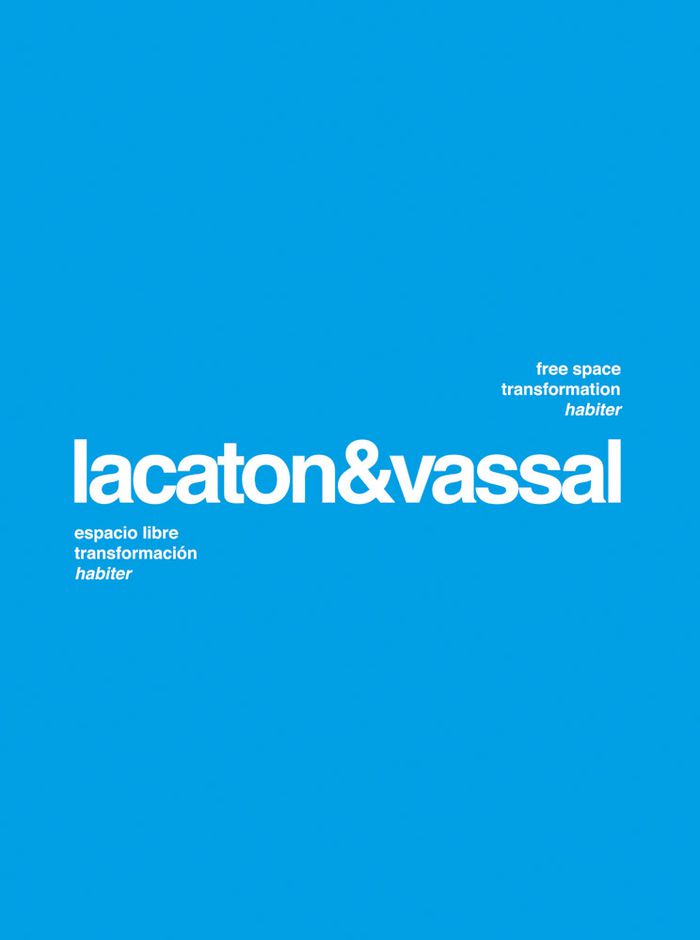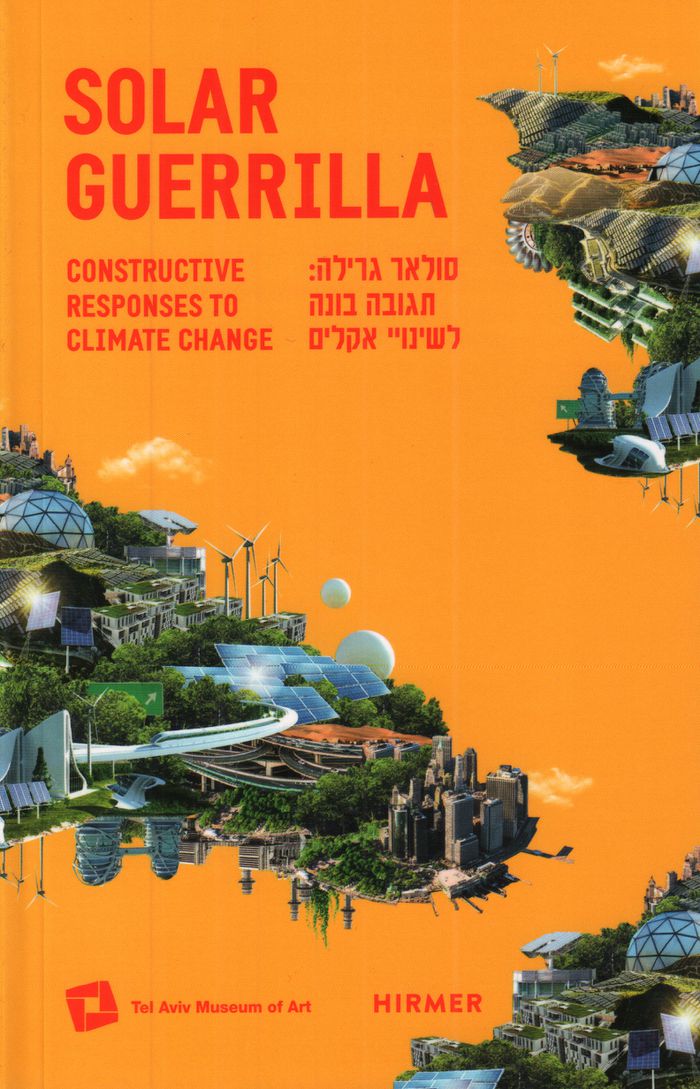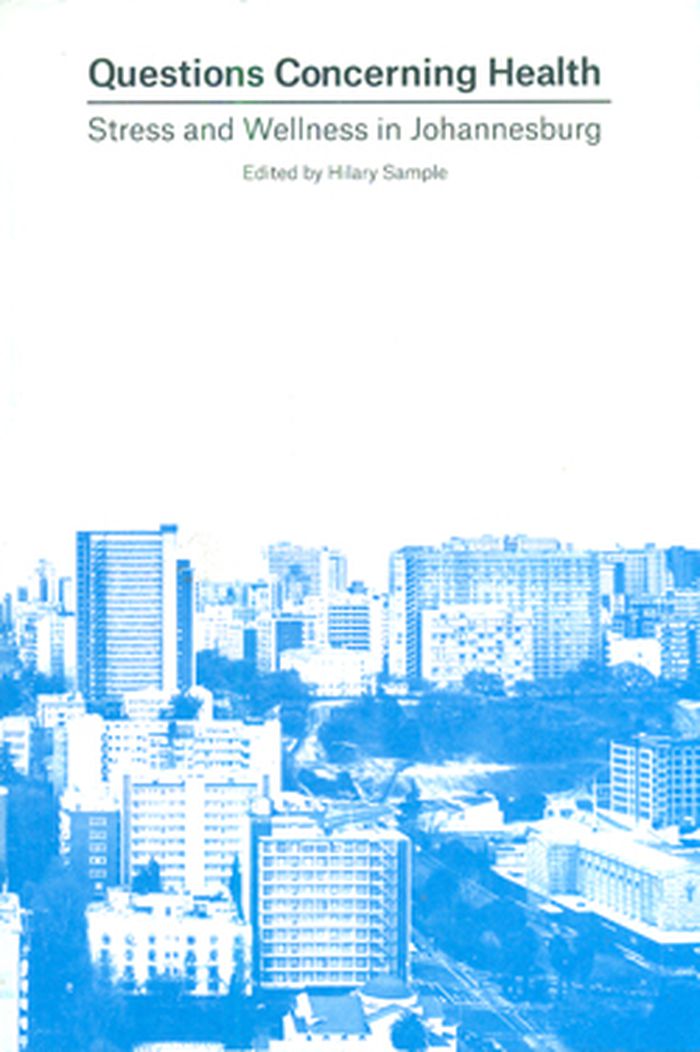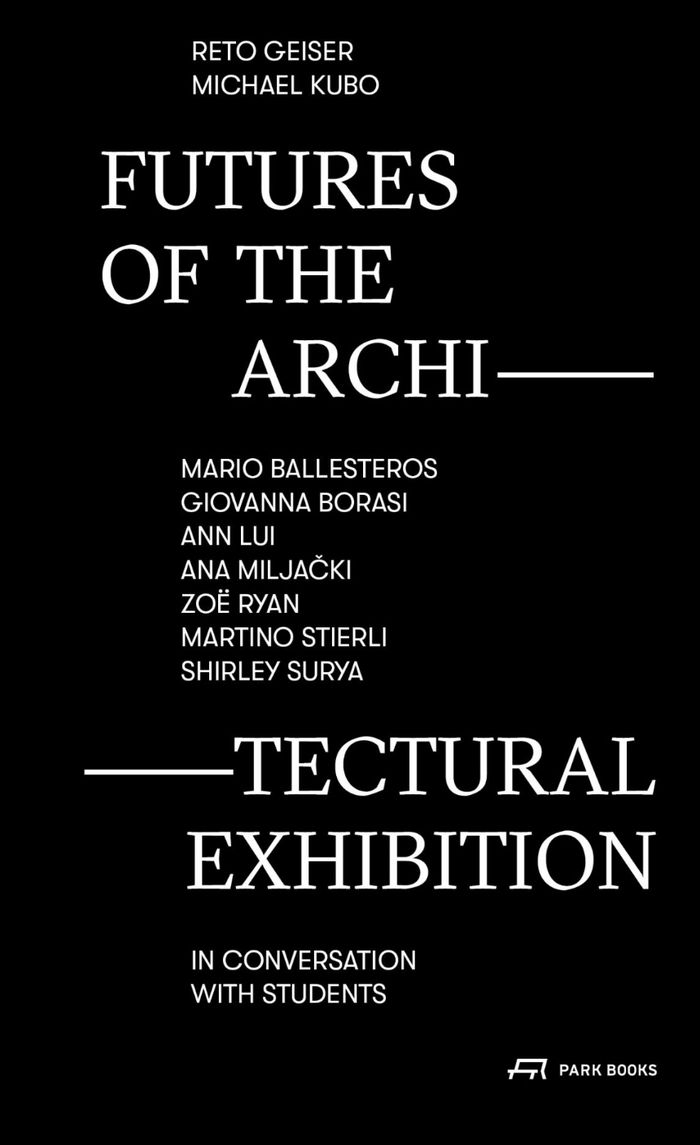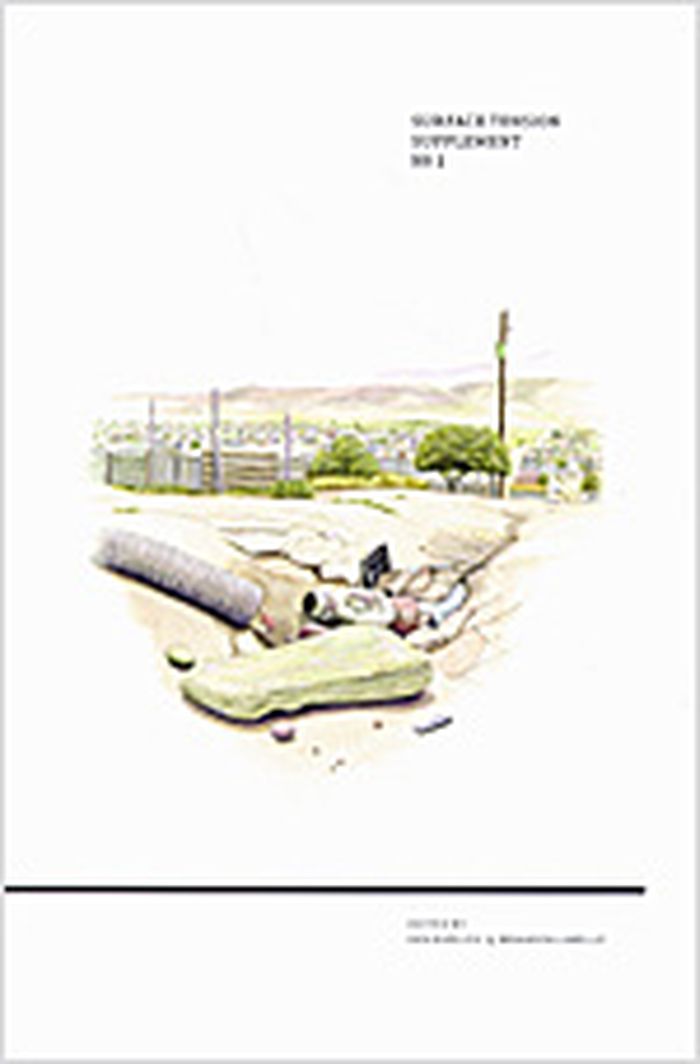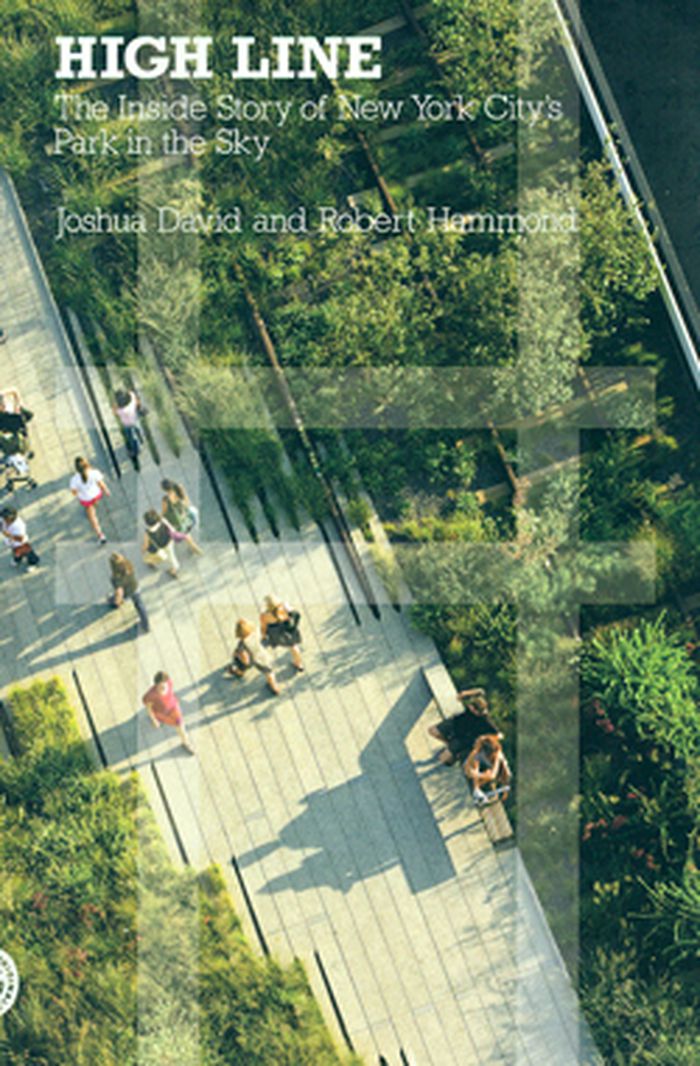$61.00
(available to order)
Summary:
The French firm Lacaton & Vassal, established in Paris in 1987 by Anne Lacaton and Jean-Philippe Vassal, has designed private and social housing, cultural and academic institutions and public spaces that reflects its advocacy of social justice and sustainability. Here, the winners of the 2021 Pritzker Prize present their oeuvre of four decades through three guiding(...)
Lacaton & Vassal: Free space, transformation, habiter
Actions:
Price:
$61.00
(available to order)
Summary:
The French firm Lacaton & Vassal, established in Paris in 1987 by Anne Lacaton and Jean-Philippe Vassal, has designed private and social housing, cultural and academic institutions and public spaces that reflects its advocacy of social justice and sustainability. Here, the winners of the 2021 Pritzker Prize present their oeuvre of four decades through three guiding concepts. Free Space signifies their concern to achieve a generosity of scale; Transformation expresses their adage “never demolish, always add, transform, extend”; and Habiter describes their insistence on making space one’s own. Accordingly, this volume presents nine built works by the architects, showing the life and inhabitants of each building so as to convey its animation and adaptation as a tenanted structure.
Architecture Monographs
$54.00
(available to order)
Summary:
Multispace exists at the intersection of the physical and digital, and in the blurring of their previously clear dividing lines. Multispace is not a single space, but a hybrid space where, in effect, we occupy multiple spaces simultaneously. We enter it on a Zoom call, when we are in our office and in a meeting with 20 people; when we are cycling down a country lane(...)
AD Multispace: Architecture at the dawn of the metaverse
Actions:
Price:
$54.00
(available to order)
Summary:
Multispace exists at the intersection of the physical and digital, and in the blurring of their previously clear dividing lines. Multispace is not a single space, but a hybrid space where, in effect, we occupy multiple spaces simultaneously. We enter it on a Zoom call, when we are in our office and in a meeting with 20 people; when we are cycling down a country lane whilst racing against thousands of others who also use the Strava app; when we are watching a TV show while live tweeting; or, perhaps most literally, when wandering around the local park looking for creatures that only appear on a smartphone screen. A fundamental question of this AD is why the phenomena that multispace describes are of concern to architects. The answer is that multispace points to a situation that is at root an architectural one. Offering both a collective and highly personalised experience, static and dynamically customisable, and above all at the same time public and private, multispace lies at the centre of a set of tensions, concerns and preoccupations at the core of our conception of architecture as theory and practice. It is the messy space between, with rough and uneven edges that are constantly shifting.
Magazines
$30.00
(available to order)
Summary:
Ongoing use of fossil fuels, the development of industrial zones in city centers, and even our growing reliance on air conditioners have led to extreme climate swings. Now an urgent public concern, global warming alarms ever more people—and yet most of them still hesitate to identify a workable plan of action. Approaching the problem head-on, "Solar Guerilla" highlights a(...)
Solar Guerilla: constructive responses to climate change
Actions:
Price:
$30.00
(available to order)
Summary:
Ongoing use of fossil fuels, the development of industrial zones in city centers, and even our growing reliance on air conditioners have led to extreme climate swings. Now an urgent public concern, global warming alarms ever more people—and yet most of them still hesitate to identify a workable plan of action. Approaching the problem head-on, "Solar Guerilla" highlights a number of programs, architects, and companies that are already active in such cities as Chicago, Hong Kong, Shanghai, and Tel Aviv. In a series of case studies, this book focuses on efficient strategies implemented at the local level, where collaboration within communities may be the key to effectively combating environmental damage. As companies like China’s Turenscape and Israel’s Electreon thrive alongside programs such as Chicago’s Third Nature approach to its famous riverwalk, the local efforts begin to yield global results. As "Solar Guerilla" demonstrates, these and other initiatives may be the best way to counter the emotional fatigue and physical disasters that currently plague us in our all-too-rapidly-changing urban environment.
Green Architecture
$25.00
(available to order)
Summary:
At a moment when the world's population increasingly lives in urban settings, the public health of cities--or the intersection of stress and wellness with architecture and urbanism--is a matter of pressing concern for designers. Questions Concerning Health reports on this critical terrain, focusing particularly on Johannesburg, South Africa (a notable test case in(...)
September 2015
Questions concerning health: stress and wellness in Johannesburg
Actions:
Price:
$25.00
(available to order)
Summary:
At a moment when the world's population increasingly lives in urban settings, the public health of cities--or the intersection of stress and wellness with architecture and urbanism--is a matter of pressing concern for designers. Questions Concerning Health reports on this critical terrain, focusing particularly on Johannesburg, South Africa (a notable test case in which the term "social equivalency," used by epidemiologists, also carries considerable historical and spatial resonance). Among the book's research findings is that health is an intensively local phenomenon that demands intensively local responses in the form of more sensitive architectural typologies as well as urban planning.
$45.00
(available in store)
Summary:
In recent years, the specific formats and challenges of exhibiting architecture and design, both built and speculative, have often been used as critical devices for identifying, communicating, and convening the public around shared matters of concern. These have increasingly included urgent questions of equity and justice, labor, gender, race, class, community, and(...)
Futures of the architectural exhibition: Five conversations on the display of space
Actions:
Price:
$45.00
(available in store)
Summary:
In recent years, the specific formats and challenges of exhibiting architecture and design, both built and speculative, have often been used as critical devices for identifying, communicating, and convening the public around shared matters of concern. These have increasingly included urgent questions of equity and justice, labor, gender, race, class, community, and lifestyle in relation to spatial issues of density, economy, policy, infrastructure, climate, and sustainability. This book records a discussion of critical approaches to the representation of architecture through conversations with seven contemporary curators working inside and outside of the museum. Mario Ballesteros (Archivo Diseño y Arquitectura), Giovanna Borasi (Canadian Center for Architecture), Ann Lui (Future Firm), Ana Miljacki (Critical Broadcasting Lab, MIT), Zoë Ryan (ICA, University of Pennsylvania), Martino Stierli (Museum of Modern Art), and Shirley Surya (M+, Hong Kong) speculate on the specific challenges and potentials of exhibiting space.
Museology
$18.00
(available to order)
Summary:
Identifying an intensified concern for place-based production in art and architecture, "Surface tension – supplements" addresses questions of site-specific art, public and architectural design, and location-based practice. With Supplement No. 1, issues of spatial practice are explored in critical essays by Jennifer Gabrys on the geographic implications of Fresh Kills(...)
Acoustics
June 2006, Copenhagen, Los Angeles
Surface tension - supplement no 1
Actions:
Price:
$18.00
(available to order)
Summary:
Identifying an intensified concern for place-based production in art and architecture, "Surface tension – supplements" addresses questions of site-specific art, public and architectural design, and location-based practice. With Supplement No. 1, issues of spatial practice are explored in critical essays by Jennifer Gabrys on the geographic implications of Fresh Kills Landfill, Scott Berzofsky, Nicholas Petr, Nicholas Wisniewski & Michael Rakowitz on artistic interventions in Baltimore, and by Claudine Isé, curator of "Vanishing Point", an exhibition at the Wexner Center for the Arts, which questions the aesthetics of urban non-spaces through recent photography and film. In addition field reports by Robin Wilson on public art projects in Bristol, Goto Newton on the cultures of interventionist practice in Curitiba Brazil, and Ken Ehrlich on the infrastructure of signage in Los Angeles as seen through the photographic works of Brandon Lattu complement the articles. In addition, documentation of public projects in Tijuana and Ohio by the artist groups Simparch and e-Xplo will be presented, along with projects designed specifically for the book by Sophie Warren and Jonathan Mosely, a Bristol-based team working with questions of utopian architecture, and Brandon LaBelle with a textual-photographic meditation on experimental architecture. Additional writings by Kathy Battista and Aoife O’Brien provide critical and creative perspectives on recent events, books, and exhibitions working with questions of architecture, performance, and media.
Acoustics
$32.95
(available to order)
Summary:
The High Line, a new park atop an ele-vated rail structure on Manhattan’s West Side, is among the most innovative urban reclamation projects in memory. The story of how it came to be is a remarkable one: two young citizens with no prior experience in planning and development collaborated with their neighbors, elected officials, artists, local business owners, and leaders(...)
High line: the inside story of New York city's park in the sky
Actions:
Price:
$32.95
(available to order)
Summary:
The High Line, a new park atop an ele-vated rail structure on Manhattan’s West Side, is among the most innovative urban reclamation projects in memory. The story of how it came to be is a remarkable one: two young citizens with no prior experience in planning and development collaborated with their neighbors, elected officials, artists, local business owners, and leaders of burgeoning movements in horticulture and landscape architecture to create a park celebrated worldwide as a model for creatively designed, socially vibrant, ecologically sound public space. In this book, David and Hammond tell how they relied on skill, luck, and good timing: a crucial court ruling, an inspiring design contest, the enthusiasm of Mayor Bloomberg, the concern for urban planning issues following 9/11.
Urban Landscapes
